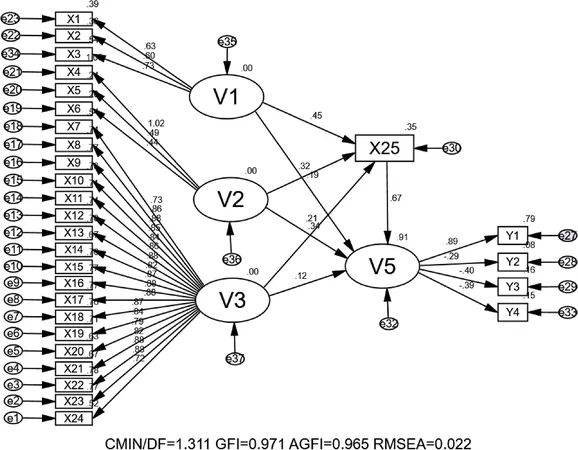
The Secret Link Between Urban Environments and Health for Seniors: How Physical Activity Holds the Key!
2024-10-11
Author: Ming
In recent years, global demographics are shifting dramatically, with the aging population set to soar from 723 million people aged 60 and over in 2022 to an astonishing 2 billion by 2050. This remarkable increase brings with it significant health challenges, particularly the rising tide of insufficient physical activity—a leading risk factor for a plethora of diseases among older adults. As populations age, it has never been more critical to focus on the health of seniors, especially in countries like China, where the aging demographic is becoming a national priority.
The World Health Organization (WHO) recognized this concern back in 1986, proposing that health promotion empowers individuals to gain greater control over their well-being. It further emphasized this in 2006 by launching the Global Age-friendly Cities (AFC) project, which seeks to create supportive living environments that enhance the capabilities of older adults. The concept of “person-environment fit” underpins this initiative: it highlights the necessity of aligning individual attributes to their surroundings to optimize health outcomes for seniors.
Given the increasing weight of these challenges, China's "Healthy China 2030" initiative was introduced, spotlighting the need for health-promoting environments. Similarly, the "Sports Health Action Plan" focuses on intervention strategies driven by sports, establishing a socioecological model for health promotion that interlinks personal characteristics, social contexts, and physical surroundings.
This study investigates the complex interplay of urban community environments, physical activity, and the health of older adults. It delves deep into how seniors' health satisfaction levels can be significantly improved through enhanced opportunities for physical activity, essentially providing a framework to understand this intricate relationship.
Key Research Questions:
1. Does the urban community environment positively influence the physical health of older adults? 2. Does physical activity serve as a mediator in this relationship? 3. How does physical activity function within this dynamic?
For our research, encompassing residents aged 55 and older from Beijing's Chaoyang and Haidian Districts, we employed advanced statistical techniques including structural equation modeling (SEM) to evaluate our hypotheses. Our findings indicate that not only does the urban environment affect physical activity levels among seniors, but physical activity also significantly contributes to their overall health. Specifically, the analysis revealed that physical activity partially mediates the impact of place-based environments on older adult health, highlighting its critical role.
Research Participants and Methodology:
The study engaged 710 older adults, with a final sample size of 625 after filtering out invalid responses. The survey assessed demographic information, socioeconomic status, and health conditions. Furthermore, tools like the Neighborhood Environment Walkability Scale (NEWS) and the Social Support Rate Score (SSRS) were used to evaluate participants' perceptions of their community environments.
Illustrating the Connection:
The results made clear that urban environments rich in accessibility—where amenities and green spaces are within easy reach—positively influence the levels of physical activity and, consequently, health status amongst older adults. Surprisingly, our study showed a strong link between walkability and active lifestyles, with residents in walkable neighborhoods demonstrating higher physical engagement compared to those in less accessible areas.
Additionally, social support systems emerge as a vital contributor; when older adults have consistent access to community fitness programs and active social interactions, the tendency to participate in physical activities significantly increases.
Policy Recommendations:
This research underscores the need for strategic planning by policymakers to build age-friendly urban environments. Improved public transport access, community resources, and supportive networks can help bolster physical activity levels among older populations. Inspired by global examples, including Finland's emphasis on a conducive environment for physical activity, it's evident that investing in these aspects is crucial for enhancing older adults' quality of life.
Final Insights:
In a rapidly developing society, maintaining the health of older adults through urban planning and community support can provide a model for fostering healthier living conditions. This approach not only enriches the lives of millions but also cultivates a robust framework for understanding health dynamics in our aging world.
By prioritizing and implementing these findings, cities can transform their environments into vibrant places where older adults can thrive—not just live—enhancing both their physical health and overall happiness. Stay tuned as we continue to unravel more secrets of healthy aging!




 Brasil (PT)
Brasil (PT)
 Canada (EN)
Canada (EN)
 Chile (ES)
Chile (ES)
 España (ES)
España (ES)
 France (FR)
France (FR)
 Hong Kong (EN)
Hong Kong (EN)
 Italia (IT)
Italia (IT)
 日本 (JA)
日本 (JA)
 Magyarország (HU)
Magyarország (HU)
 Norge (NO)
Norge (NO)
 Polska (PL)
Polska (PL)
 Schweiz (DE)
Schweiz (DE)
 Singapore (EN)
Singapore (EN)
 Sverige (SV)
Sverige (SV)
 Suomi (FI)
Suomi (FI)
 Türkiye (TR)
Türkiye (TR)